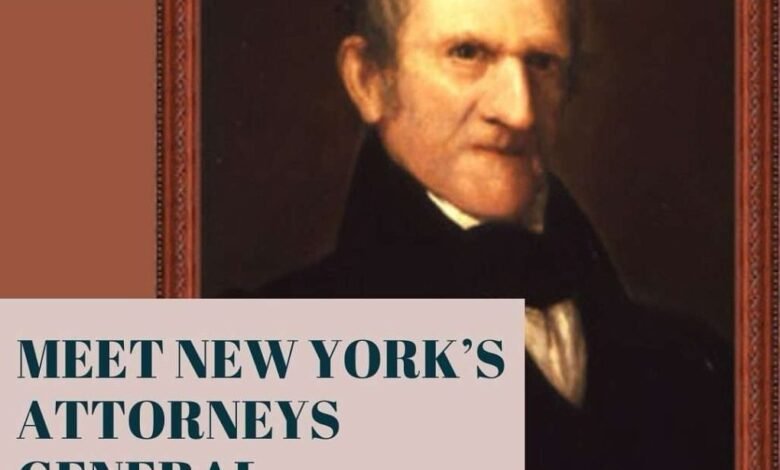Ambrose Spencer: Libel, Blasphemy & Reform


 The 6th Attorney General of New York State, Ambrose Spencer was born on December 13, 1765, in Salisbury, Connecticut. He attended Yale and graduated from Harvard University in 1783 at just 17 years old.
The 6th Attorney General of New York State, Ambrose Spencer was born on December 13, 1765, in Salisbury, Connecticut. He attended Yale and graduated from Harvard University in 1783 at just 17 years old.
He studied law with John Canfield (ca.1740-1786) in Sharon, Connecticut and also with John Bay in Claverack, Columbia County, NY, and then with Ezekiel Gilbert in nearby Hudson.
Spencer served as a member of the New York State Assembly from 1793 to 1795 From 1796 to 1801; he was Assistant Attorney General for the Third District, (Columbia and Rensselaer counties). In 1802, Spencer was appointed New York State Attorney General, a role he held until 1804.
During this time, he famously prosecuted Harry Croswell (1778-1858), the publisher of The Wasp, for seditious libel, in a landmark case that became foundational in the development of free speech law in the United States.
People v. Croswell, 1804
President Thomas Jefferson, frustrated by anti-administration articles in Federalist newspapers in 1803, encouraged State Democratic-Republican administrations to enforce the Sedition Act.
The Wasp, a small Federalist newspaper in Hudson, NY published a story claiming that Jefferson had paid publisher James T. Callender to run negative stories against his opponents.
New York Attorney General Ambrose Spencer, who himself had been the target of one of Croswell’s attacks, immediately went before Columbia County grand jury and obtained an indictment on charges of criminal libel and sedition against Croswell.
The trial began in July of that year in the Court of Sessions in Columbia County with Chief Justice Morgan Lewis presiding. The State was represented by Attorney General Spencer and the defense by William Peter Van Ness.
Van Ness sought to introduce evidence of the truth of the published statements, but Justice Lewis instead instructed the jury to consider only the question of whether or not there was evidence beyond reasonable doubt that Croswell had published the statements. The jury found Croswell guilty.
Alexander Hamilton who, due to pressure of work had been unable to represent Croswell at trial, brought the matter before the New York Supreme Court of Judicature on a writ of certiorari. The public, recognizing the importance of the case, packed the courtroom.
Hamilton, in a six-hour closing argument, passionately advocated for freedom of the press, stating that the right of giving the truth in evidence, in cases of libels, is all-important to the liberties of the people. Truth is an ingredient in the eternal order of things, in judging of the quality of acts.
Justice James Kent wrote an opinion adopting Hamilton’s reasoning in which Justice Smith Thompson concurred. Chief Justice Lewis wrote an opinion upholding the long-established precedent in libel cases that rendered truth irrelevant and Justice Brockholst Livingston concurred in this decision.
The Court was deadlocked because the “fifth” judge, Ambrose Spencer, had deferred his judicial appointment to the New York Supreme Court of Judicature during its pendency of this case so that he could continue to represent the People.
In these circumstances, the prosecutor was entitled to move for judgment on the verdict, but the motion was not made.
On April 6, 1805, the New York State Legislature enacted L. 1805, ch 90, providing that truth was a defense to a libel charge “where published with good motive and for justifiable ends.” Sixteen years later, this principle was enshrined in New York’s second Constitution, adopted in 1821.
People v. Ruggles, the Blasphemy Case
In 1804, Spencer was appointed an Associate Justice of the Supreme Court of Judicature, where he served until being named Chief Justice in 1819. He would continue in this role until 1823, when he was legislated out of office by the state’s new constitution.
During his tenure, Spencer played a key role in landmark cases, including People v. Ruggles, the first reported case of prosecution for blasphemy in the State of New York.
On September 2, 1810, John Ruggles, speaking in a loud voice in a crowded tavern in Salem, in Washington County, NY, said “Jesus Christ was a bastard, and his mother must be a whore.”
He was arrested, charged with blasphemy and tried in the County’s Court of Oyer and Terminer on June 11, 1811. Ruggles was found guilty and Justice Spencer sentenced him to three months in prison and fined him $500.
The Supreme Court of Judicature heard the appeal during the August term of 1811. John Lansing Wendell, counsel for Ruggles, distinguished between the union of church and state in England, and New York’s constitution provision allowing “free toleration to all religions and all kinds of worship” that prohibited any official relationship between church and state.
Prosecuting attorney Gold argued that the common law of England, as it stood in 1776, was adopted by the constitution and made part of the law of the State. He asserted that blasphemy was an ancient common law offense that existed independently of the established church.
Chief Justice James Kent delivered the opinion of the unanimous court and stated
“Though the Constitution has discarded religious establishments, it does not forbid judicial cognizance of those offences against religion and morality which have no reference to any such establishment, or to any particular form of government, but are punishable because they strike at the root of moral obligation, and weaken the security of the social ties.
“We stand equally in need, now as formerly, of all that moral discipline, and of those principles of virtue, which help to bind society together. The people of this state, in common with the people of this country, profess the general doctrines of Christianity, as the rule of their faith and practice; and to scandalize the author of these doctrines is not only, in a religious point of view, extremely impious, but, even in respect to the obligations due to society, is a gross violation of decency and good order.”
The Court then affirmed the judgment of the Court of Oyer and Terminer.
During the debates of the Constitutional Convention of 1821, James Kent stated that:
“The court considered those blasphemous words, uttered with such an intent, as a breach of public morals, and an offence against public decency. They were indictable on the same principle as the act of wantonly going naked, or committing impure and indecent acts in the public streets.
“It was not because Christianity was established by law, but because Christianity was in fact the religion of this country, the rule of our faith and practice, and the basis of the public morals. Such blasphemy was an outrage upon public decorum, and if sanctioned by our tribunals would shock the moral sense of the country, and degrade our character as a Christian people.”
The Constitutional Convention then voted to confirm the Ruggles decision and Chief Justice Kent’s reasoning.
Mayor of Albany
In addition to his judicial service, Spencer was deeply involved in politics, a member of the Clintonian faction, supporters of DeWitt Clinton (1769–1828). Spencer served as Mayor of Albany from 1824, after defeating John Ten Eyck Lansing Jr., and was reelected for another one year term in 1825. He was elected to the U.S. House of Representatives from 1829 to 1831. He was a slave-holder.
Spencer’s political influence was not limited to his direct service — he played a pivotal role in the 1830 impeachment of Judge James H. Peck, who was charged of abuse of the contempt power. Peck was acquitted but the impeachment further solidifying Specer’s importance in legal reforms.
Spencer’s academic honors include posthumous LL.D. degrees from the University of Pennsylvania and Harvard University. His legacy lives on in the Finger Lakes town of Spencer, in Tioga County, NY, named in his honor.
Spencer passed away in 1848, leaving a profound impact on New York’s legal history.
Among his children with wife Laura Canfield (1768–1807) were:
John Canfield Spencer (1788–1855), U.S. Secretary of War and U.S. Secretary of the Treasury under President John Tyler;
Abigail “Abby” Spencer (1790–1839), who married Albany Mayor John Townsend;
William Augustus Spencer (1792–1854), who was married to Eleanora Eliza Lorillard (1801–1843), the daughter of Peter Abraham Lorillard II; and
Ambrose Spencer Jr. (1795–1814), aide-de-camp to Major-General Jacob Jennings Brown during the War of 1812.
After Laura Canfield died Spencer remarried to DeWitt Clinton’s sister Mary (1773–1808) and then her sister Katherine Clinton (1778–1837).
Ambrose Spencer is buried in Albany Rural Cemetery.
This essay is one of a series by the Historical Society of the New York Courts on the history of New York’s Attorneys General. You can read them all here.
The Historical Society of the New York Courts brings together judges and lawyers to preserve, protect, and promote the legal history of New York — how it works to promote democracy, ensure justice, and promote the rule of law. Learn more about the Society and support their efforts by becoming a member or donating here.
Source link




